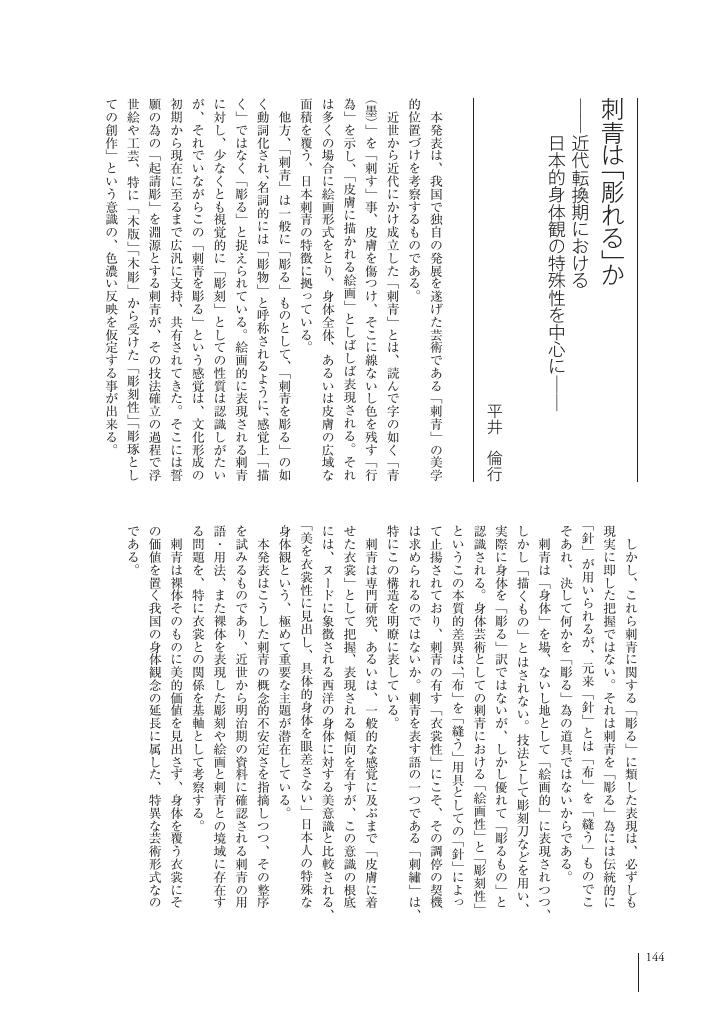6 0 0 0 OA 刺青は「彫る」ものであるか 日本刺青の「用語法」と「衣裳性」を中心に
- 著者
- 平井 倫行
- 出版者
- 美学会
- 雑誌
- 美学 (ISSN:05200962)
- 巻号頁・発行日
- vol.69, no.2, pp.25, 2018 (Released:2020-03-23)
This paper examines the Japanese term irezumi which signifies tattoo. From ancient times, irezumi has also been called horimono (something that has been carved) in Japan. However, neither does irezumi imply to carve the body, nor can it be equated to sculpture. It has often been referred to as ‘painting on skin’. However, irezumi is not the art of drawing or painting on the skin. It is distinct from that. The above examples are words which express irezumi, but none of them are, strictly speaking, appropriate terminology. Irezumi involves the piercing of skin with a needle, and a needle is used to sew cloth, not to ‘carve’ into or draw on something. How, then, did irezumi come to be called horimono (sculpture)? This study examines the ambiguity of the term irezumi by documenting it in manuscripts dating from the beginning of the modern times to the Meiji period. This study also explores the aspect of costume that the term appears to articulate.
1 0 0 0 OA 刺青は「彫れる」か 近代転換期における日本的身体観の特殊性を中心に
- 著者
- 平井 倫行
- 出版者
- 美学会
- 雑誌
- 美学 (ISSN:05200962)
- 巻号頁・発行日
- vol.68, no.2, pp.144, 2017 (Released:2019-01-02)
